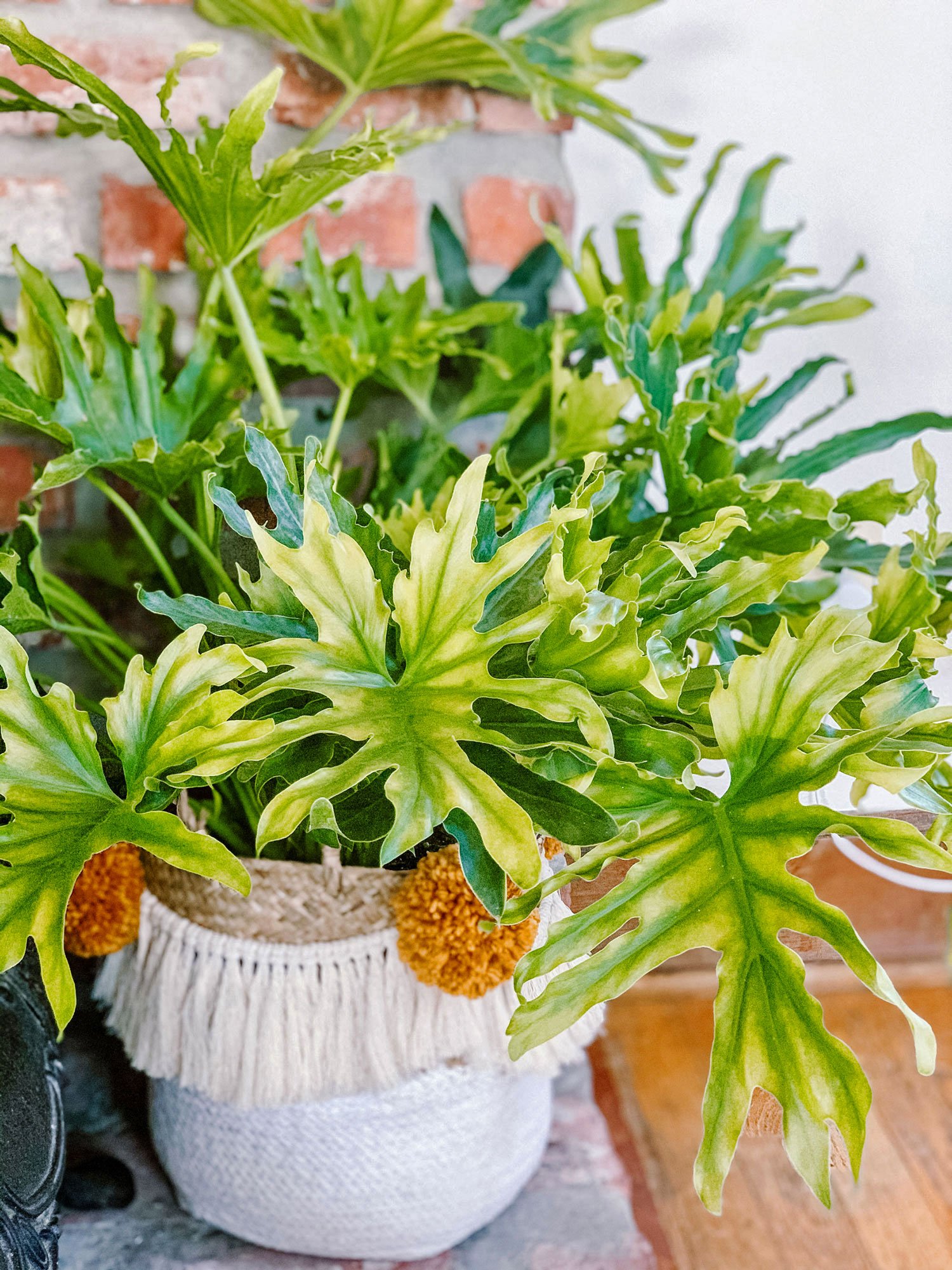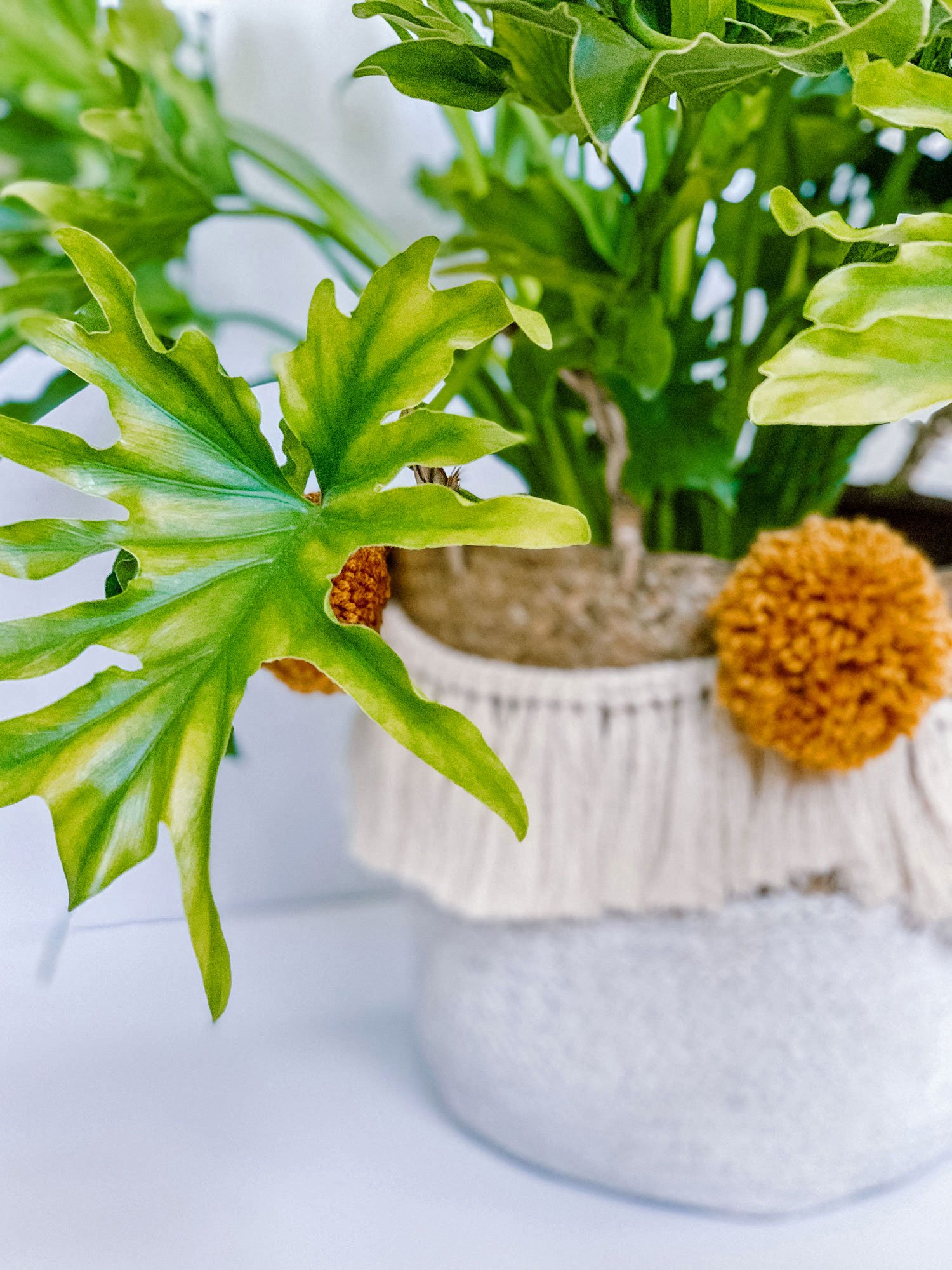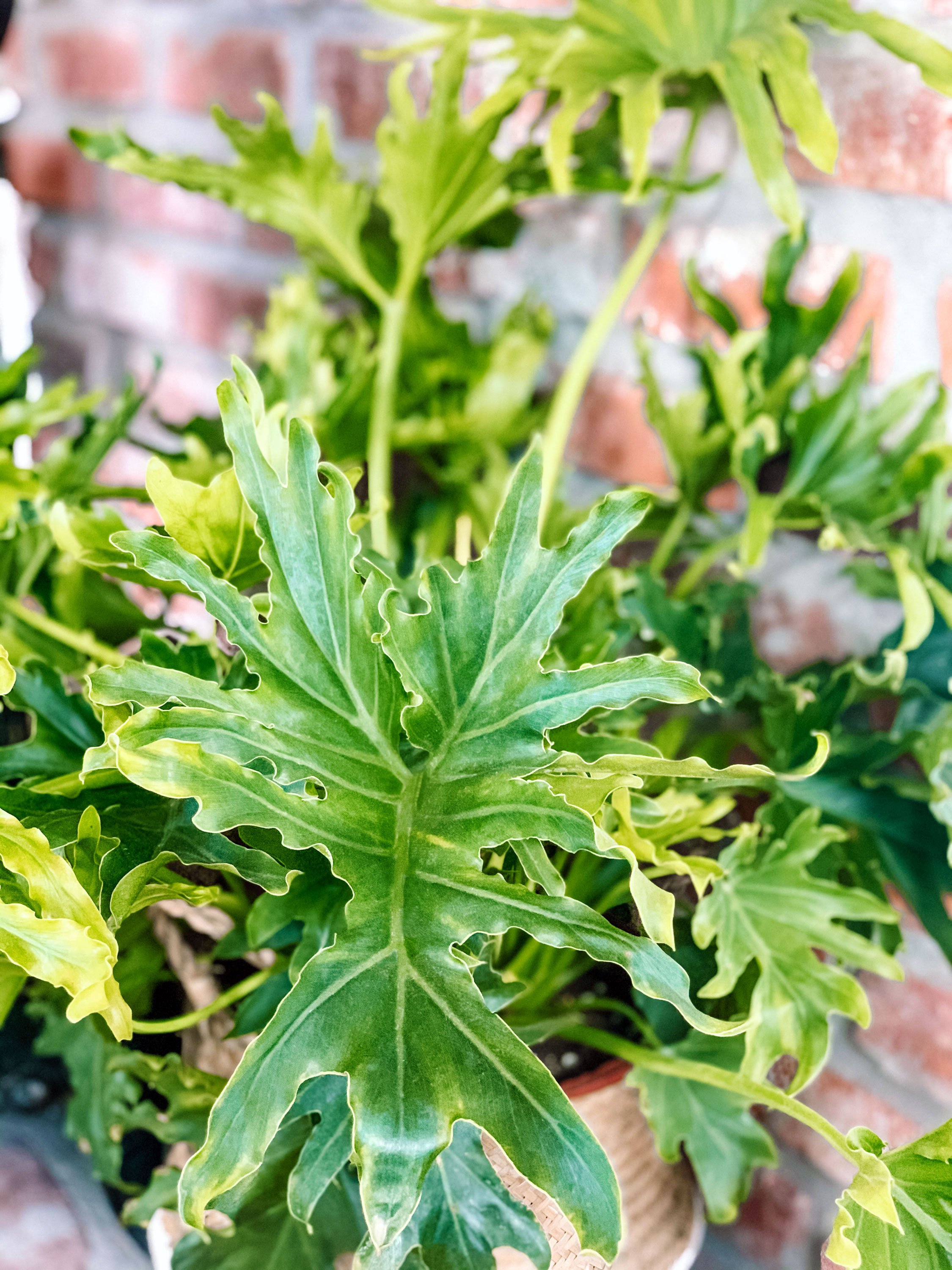Care Guide for the 'Lickety Split' Philodendron
About the 'Lickety Split' Philodendron
I’m sure most of you have heard of a Philodendron. It is a common genus, often seen in many varieties in your plant store. Philodendron’s are loved for their foliage and for being easy to care for. The ‘Lickety Split’ is no different. Developed as a hybrid more than five years ago, it has stunning, huge leaves with deep splits on the side and curly edges. It can grow in a variety of light conditions and won’t punish you if you neglect it. Every leaf is unique and you never know what shape it is going to grow into. Lickety Splits are a rich green with new growth coming in lime.
This plant gives off a very tropical feel. That, combined with its impressive size, means this is quite a statement plant. Be prepared when buying one that it will eventually need a sizeable corner to sit in. I just repotted my Lickety Split and have it sitting within a DIY Macrame Pom Basket. It is approximately 30” tall and wide but has a lot of new growth sprouting in the middle so I am really excited to see it shoot up. These get to about 3 feet tall and wide indoors.
How to Care for the 'Lickety Split' Philodendron
LIGHT: A Lickety Split can grow in many spaces throughout your home with few objections. Bright to medium, indirect sunlight is ideal. Lower light may result in slower growth but won’t hurt it. Direct sunlight is the only no-no as it can burn those pretty leaves. My Lickety Split sits about 5 feet from two East-facing windows and 10 feet from a South-facing window.
WATER: Watering is similarly flexible. Water when the top couple inches of the soil are dry. I always do the finger test, which is as simple as sticking your finger in the soil to see how moist it is. When in doubt, wait longer. When watering, make sure the soil is saturated enough you see water come out into the tray.
TEMPERATURE: Ideal temperature for the plant is around 60-75ºF. While slightly lower temperatures won’t hurt it, it will slow down growth.
FERTILIZER: During the growing season make sure to fertilize monthly and you will really see your Philodendron thrive.
HUMIDITY: Humidity is not a must but it doesn’t hurt. I regularly mist many of my plants and will give the Lickety Split some sprays as I go throughout the room. I also have a humidfier to help some of my other plants out. Misting can also help keep the leaves clean. I spray a cloth and give them a wipe down regularly to ensure they are getting maximum light absorption.
There are so many amazing forms of Philodendrons and I happen to love the Lickety Split. I hope you do too now and are inspired to add one to your plant collection. It gives me major Jurassic Park vibes and I really feel like it rounds out my living room. If you have any questions ask away in the comments!
Common Issues
YELLOW LEAVES: The moist common reason for yellowing leaves is overwatering. Make sure that the majority of your soil has dried out before watering again. Just do the ole “stick your finger in the soil test”. In the winter I water my philodendrons less. If your soil is alternating between very dry and very wet this can also cause stress and yellowing. Try to get your plants on a schedule. When you water, make sure the water flows out the bottom and then dump out the excess water before returning your tray.
Some yellow leaves are normal. As your plant pushes new growth out the top, old leaves at the bottom may die away. Just trim them off when ready with clean shears or scissors.
PESTS: Philodendrons are susceptible to a few houseplant pests. They can be plagued by spider mites which suck the moisture out of a plant and leave it yellowed and dying. Scale, aphids, and mealybugs are also common indoor plant pests. To treat them, separate your plant from the others to avoid spreading. Neem oil is an effective pest management tool along with other low-toxic insecticidal soaps. I do not recommend dish soap or alcohol as it can burn leaves.
DROOPING: Philodendrons do eventually vine in the wild so you may notice over time yours drops its lower leaves and becomes lengthy with aerial roots. While growth can be encouraged with a moss pole or trellis, I like to keep my philodendrons dense. You can use rubber ties and stakes to help support them. Alternatively, you can prune your philodendron so the leggier parts are stubs. Eventually new growth will emerge from these areas. You can help encourage this with a little more light than usual.













